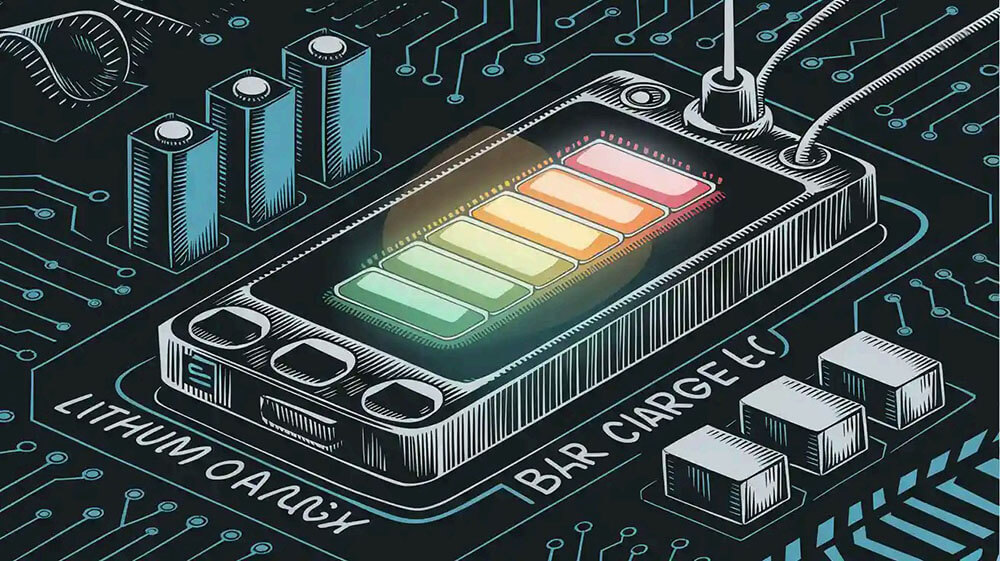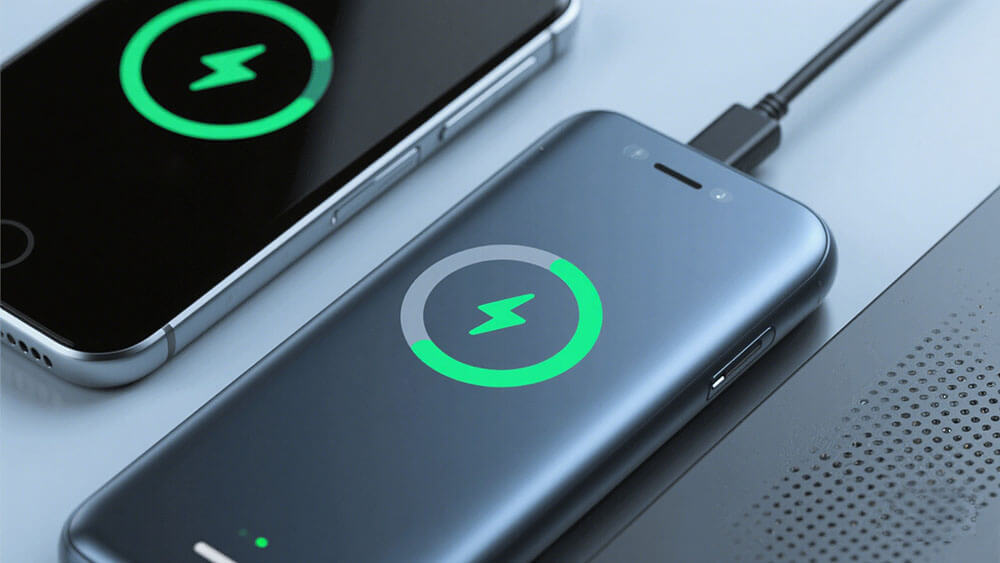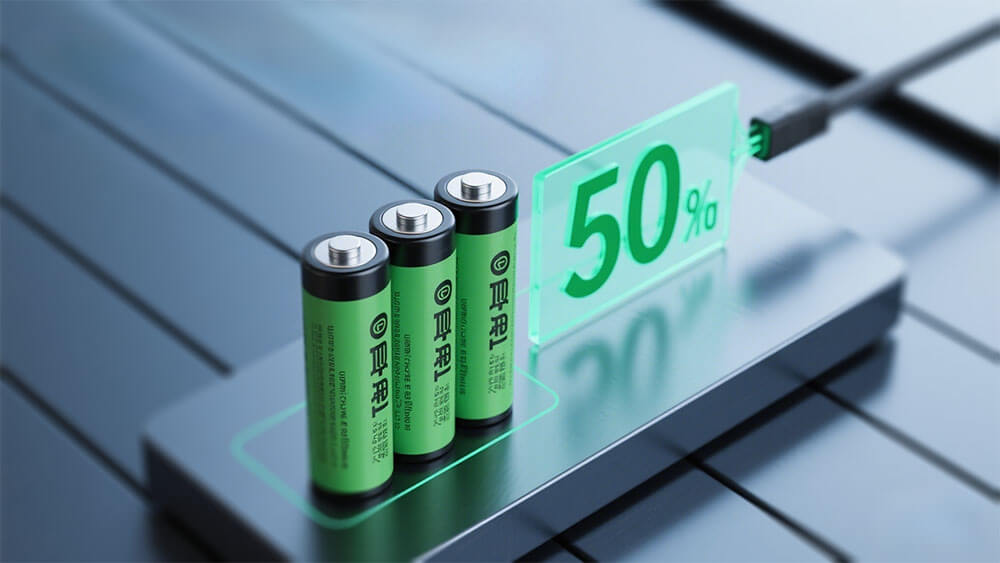Contents

Understanding the state of charge (SOC) and full charge capacity (FCC) in lithium battery systems allows you to monitor the percentage of remaining energy relative to the battery’s total capacity. In lithium batteries, SOC and FCC are critical parameters used to describe battery performance, health, and usability.
Key Takeaways
Knowing State of Charge (SOC) shows how much energy is left. This helps keep devices like medical tools and robots working well.
Full Charge Capacity (FCC) shows the most energy a battery can hold. Watching FCC helps plan repairs and makes batteries last longer.
Using SOC and FCC together in battery systems improves safety and efficiency. It also makes devices work better and lowers costs.

Part 1: What Are SOC and FCC in Lithium Batteries?
1.1 SOC: Definition and Role in Battery Management Systems
Definition
SOC represents the remaining usable energy in a battery as a percentage of its current maximum capacity (FCC).
Example: A battery with 80% SOC has 80% of its available energy remaining.
Key Characteristics:
Dynamic: Changes rapidly during charging/discharging (e.g., from 50% to 30% in minutes).
User-Facing: Displays “battery percentage” on devices (e.g., robotics, medical devices).
Critical for Safety: Prevents overcharging (SOC=100%) or deep discharging (SOC=0%), which can damage batteries.
Measurement Methods:
Coulomb Counting: Tracks current flow over time (integrates current to calculate charge).
Voltage Correlation: Estimates SOC based on battery voltage (varies with chemistry and temperature).
Advanced Algorithms: Combines voltage, temperature, aging, and impedance data (used in Battery Management Systems, BMS).
By leveraging advancements in SOC estimation, such as machine learning algorithms and Gaussian process regression, you can achieve higher accuracy and improve battery management systems. These methods utilize extensive field data, ensuring robust and reliable results for real-world applications.
1.2 FCC: Definition and Its Impact on Lithium Battery Performance
FCC (Full Charge Capacity) refers to the maximum amount of electric charge (measured in mAh or Ah) that a lithium battery can store in its current state of health (SOH). It represents the battery’s actual usable capacity at a given time, which diminishes over the battery’s lifespan due to chemical and physical degradation.
Nominal Capacity vs. FCC:
Nominal Capacity: The theoretical capacity specified by the manufacturer when the battery is new (e.g., 3000mAh).
FCC: The real-world capacity, which declines with aging and usage (e.g., 2700mAh after 500 charge cycles).
Factors Leading to FCC Degradation
FCC reduction is caused by irreversible changes in the battery’s internal chemistry:
Electrode Degradation:
Lithium-ion batteries use graphite anodes and metal oxide cathodes. Repeated charging/discharging causes mechanical stress (e.g., cracking, pulverization) and loss of active material.
Electrolyte Breakdown:
The electrolyte decomposes over time, forming a solid-electrolyte interphase (SEI) layer that consumes lithium ions, reducing available charge carriers.
External Factors:
Temperature: High temperatures (>40°C) accelerate side reactions and SEI growth.
Charge/Discharge Rates: Fast charging and high discharge currents generate heat and stress.
Depth of Discharge (DoD): Frequent deep discharges (e.g., 0%–100%) strain the electrodes.
1.3 The Relationship Between SOC and FCC in Battery Packs
In a battery pack (composed of multiple cells connected in series or parallel), the relationship between SOC (State of Charge) and FCC (Full Charge Capacity) becomes more complex. The performance of the battery pack depends not only on the SOC and FCC of individual cells but also on cell-to-cell consistency (e.g., differences in capacity, internal resistance, aging) and the control strategies of the Battery Management System (BMS).
Basic Definitions
SOC (State of Charge): The current remaining charge percentage of a single cell or the entire pack (relative to its current maximum capacity).
FCC (Full Charge Capacity): The maximum charge a single cell or the entire pack can store in its current state of health (measured in Ah or Wh).
Relationship Between Cells and the Pack
The SOC and FCC of all cells collectively determine the overall performance of the pack through series or parallel configurations:
Series-Connected Pack
Total Voltage = Cell voltage × Number of cells in series.
Total FCC = Minimum FCC among all cells.
Example: For 3 cells in series with FCCs of 2000mAh, 1900mAh, and 2100mAh, the pack’s effective FCC is 1900mAh (determined by the weakest cell).
Total SOC: Limited by the weakest cell.
If one cell’s SOC drops to 0%, the entire pack stops discharging, even if other cells still have charge.
Parallel-Connected Pack
Total Capacity = Sum of individual cell FCCs.
Total SOC: Weighted average of individual cell SOCs (based on their FCCs).
Example: Two cells in parallel with FCCs of 2000mAh (SOC=50%) and 1000mAh (SOC=100%) yield a total SOC = (2000×50% + 1000×100%) / (2000+1000) = 66.7%.
Interaction Between SOC and FCC in Battery Packs
Impact of Cell Imbalance
FCC variations among cells (uneven capacity degradation) lead to:
SOC Imbalance:
During charging/discharging, cells with lower FCC experience faster SOC changes. For example, in a series pack, the weakest cell may reach 100% SOC first (overcharge risk) or drop to 0% SOC prematurely (early discharge termination).
Reduced Capacity Utilization:
The pack’s usable capacity is limited by the weakest cell (in series), lowering overall FCC efficiency.
BMS Balancing Strategies
The BMS mitigates cell-to-cell SOC and FCC differences using active or passive balancing:
Passive Balancing: Dissipates excess energy from high-SOC cells via resistors (suitable for small packs).
Active Balancing: Transfers energy from high-SOC to low-SOC cells (more efficient but costly).
Dynamic FCC Adjustment: The BMS continuously monitors cell FCCs and recalculates the pack’s total FCC.
Mathematical Relationship
The pack’s total SOC and FCC are calculated based on cell capacities:


Part 2: How Are SOC and FCC Measured or Estimated?
2.1 SOC (State of Charge) Measurement/Estimation
SOC represents the remaining usable energy in a battery as a percentage. Its estimation is challenging due to nonlinear battery behavior and external factors like temperature and aging. Common methods include:
Direct Measurement Methods
Open-Circuit Voltage (OCV) Method:
Principle: SOC correlates with battery voltage when the battery is at rest (no load).
Process:
Disconnect the battery from the load/charger and let it rest (e.g., 1–2 hours).
Measure the voltage and compare it to a pre-defined OCV-SOC lookup table (specific to battery chemistry).
Pros: Simple, low cost.
Cons: Requires rest time, inaccurate under dynamic conditions or aging.
Coulomb Counting (Current Integration):
Principle: Track net charge flow by integrating current over time.
Formula:

Where SOC0 = initial SOC, I= current (positive for charging, negative for discharging).
Pros: Real-time estimation, works during operation.
Cons: Requires accurate initial SOC; errors accumulate due to sensor drift, leakage, or FCC changes.
Model-Based Estimation
Equivalent Circuit Models (ECM):
Use electrical models (e.g., Thevenin model) to simulate battery behavior, combining voltage, current, and internal resistance.
SOC is inferred by comparing model outputs to real-time measurements.
Kalman Filter (Extended Kalman Filter, EKF):
A recursive algorithm that predicts SOC by combining Coulomb counting with voltage/current measurements and statistical noise filtering.
Pros: Handles sensor inaccuracies and dynamic conditions.
Cons: Computationally intensive, requires precise battery models.
Machine Learning (ML):
Train neural networks or regression models using historical data (voltage, current, temperature) to predict SOC.
Pros: Adapts to aging and nonlinear behaviors.
Cons: Requires large datasets and computational resources.
Hybrid Methods
Combine OCV, Coulomb counting, and model-based approaches for higher accuracy.
Example: Use OCV to reset SOC periodically while relying on Coulomb counting for real-time updates.
2.2 FCC (Full Charge Capacity) Measurement/Estimation
FCC reflects the battery’s maximum storable charge and degrades over time. Estimation methods include:
Direct Measurement
Full Discharge/Charge Cycle:
Process:
Fully discharge the battery to 0% SOC, then charge it to 100% while measuring the total charge input.
The measured charge is the current FCC.
Pros: Most accurate method.
Cons: Time-consuming, stresses the battery (not practical for daily use).
Partial Cycling with Interpolation:
Measure charge/discharge over a partial cycle and extrapolate FCC using known SOC boundaries.
Model-Based Estimation
Aging Models:
Track cycle count, temperature history, and depth of discharge (DoD) to predict FCC degradation.
Example:

Where k = degradation coefficient (empirically determined).
Impedance Spectroscopy:
Measure internal resistance or impedance shifts, which correlate with FCC loss.
BMS Algorithms:
Continuously update FCC using:

Where ΔSOC = SOC change during a charge/discharge phase.
Adaptive Learning
Modern BMS systems use machine learning to adjust FCC estimates based on historical usage patterns and degradation trends.
2.3 Challenges in SOC/FCC Estimation
Aging Effects:
Battery chemistry changes over time, altering OCV-SOC relationships and internal resistance.
Temperature Dependence:
Low temperatures reduce FCC and distort voltage readings; high temperatures accelerate aging.
Cell Imbalance in Packs:
In multi-cell systems, variations in individual cell FCC/SOC complicate pack-level estimates.
Sensor Errors:
Current/voltage sensor inaccuracies lead to cumulative errors in Coulomb counting.
State of charge and full charge capacity are essential metrics for optimizing lithium battery performance, safety, and efficiency. Accurate SOC and FCC estimation ensures reliable operations in industries like medical devices, robotics, and infrastructure. Emerging technologies, such as AI-based algorithms and advanced materials, promise to address challenges like capacity degradation and enhance battery management systems. These innovations improve energy density by up to 40%, enabling longer runtimes and better reliability. By leveraging these advancements, you can maximize the lifespan and efficiency of your battery packs, ensuring sustainable and cost-effective solutions for critical applications.
FAQ
1. How does SOC estimation improve battery safety?
SOC estimation prevents overcharging and deep discharging, reducing risks like overheating or capacity loss. It ensures safe and efficient battery operation in critical applications.
2. Why is FCC tracking essential for lithium battery packs?
FCC tracking monitors capacity degradation, helping you plan maintenance and optimize battery life. It ensures consistent performance in industries like medical devices and robotics.
3. Can SOC and FCC data enhance sustainability?
Yes, accurate SOC and FCC data reduce energy waste and extend battery lifespan. This supports sustainable practices in industries like transportation and infrastructure.
For custom battery solutions tailored to your needs, explore Large Power’s custom battery solutions.





